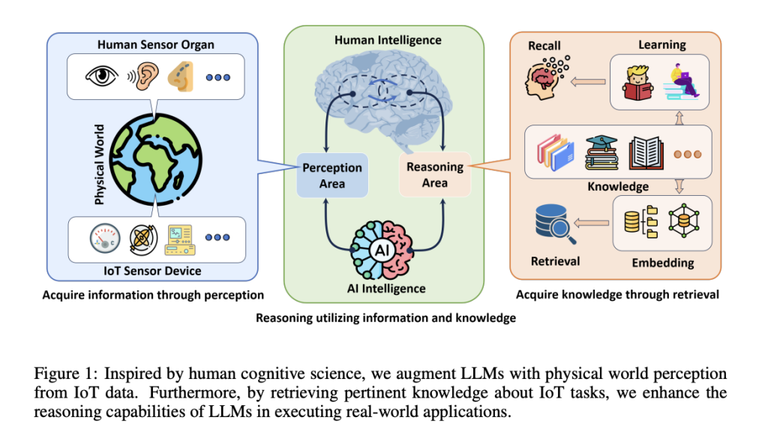Rule-based systems, traditional machine learning models, and basic AI-driven methods are conventional models for processing IoT data. Processing dense numerical data and complex time-series inputs are significant struggles these models face due to their inability to capture context. They fail to generalize in different environments, a characteristic required for effective reasoning capabilities in real-world scenarios. For example, in traditional LLMs like Chat-GPT 4, only 40% accuracy in activity recognition and 50% in machine diagnosis are achieved after processing the raw IoT data. The IoT-LLM framework has been introduced to tailor the LLMs to specific IoT tasks to enhance their reasoning capabilities in monitoring real-world scenarios using a three-step customization approach.
The IoT-LLM framework consists of these three steps:

Preprocessing: It is crucial to preprocess raw IoT data into formats easily understood by the LLMs. This process simplifies and enriches the data, providing more context to the LLMs.
Commonsense Knowledge Activation: Chain of thought prompting is utilized in this step for better reasoning and interpretation of the processed data. Complex tasks are broken down into more manageable ones, mirroring human cognitive thinking. Inherent common sense is employed within these LLMs, and specialized role definitions guide the models in understanding the context better.
IoT-Oriented Retrieval-Augmented Generation: In the final step, the LLMs use the retrieval-augmented generation model to retrieve context-specific understanding dynamically. The model can effectively use current context and previously acquired knowledge. This combination helps with quick adaptation to real-time changes in IoT environments.
The integration of these three steps has improved the capabilities of the LLMs, where an improvement of all three steps resulted in a task accuracy of 65% over what is achievable using other conventional models. Such results were empirically obtained through a set of five real-world benchmark tasks, including heartbeat anomaly detection. These tasks used multiple datasets to assess open-source and closed-source LLMs equally. It was observed that the LLM-IoT Framework was able to perform the tasks quite readily and showed a better task execution performance than others in varying settings.
To sum up, the LLM-IoT framework resolved the issue of task-reasoning capability in the context of the Internet of Things (IoT). This formulation incorporated a chain-of-thought prompting and retrieval-augmented generation model, which addressed the shortcomings of the LLM in processing the IoT data. This work sets the stage for more developments in task reasoning targeting IoT, which could be used in self-operated systems, medical aid systems, and smart cities.